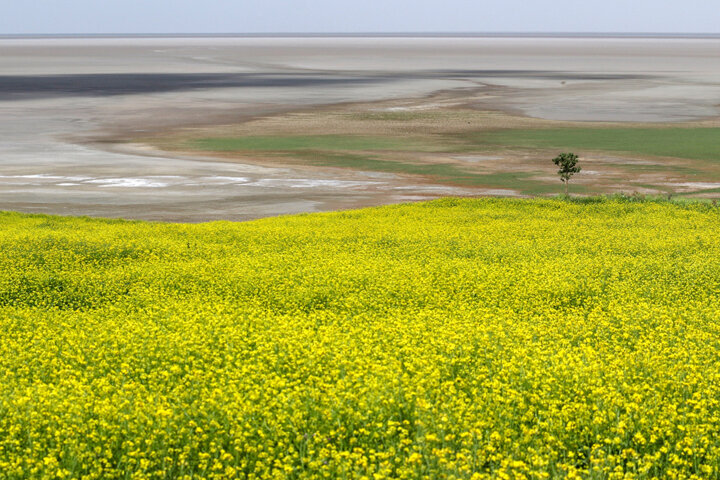Wetlands protection helps sustainable agriculture around Lake Urmia

TEHRAN - The plan to protect wetlands has reduced water consumption by up to 27 percent, helping sustainable agriculture around Lake Urmia.
The consumption of chemical fertilizers has also been reduced by 25-40 percent, IRNA reported.
The unique characteristics of wetlands, including groundwater control, climate change adaptation, the livelihood of local communities through fishing, livestock grazing and agriculture, natural water purification, purification and absorption of pollutants, and nature tourism have made sustainable management and protection of wetlands essential for humans, Jaleh Amini, an official with the Department of Environment has said.
In this line, comprehensive management plans have been prepared for 44 wetlands in the country.
Therefore, the DOE determined water rights for 11 wetlands out of 25 wetlands that are registered in the Ramsar Convention, but the conditions of the wetlands show that the water rights have not been fully met.
The Convention on Wetlands is an intergovernmental treaty that provides the framework for the conservation and wise use of wetlands and their resources.
Lake Urmia in the northwestern West Azarbaijan province started to dry up in the 2000s.
The lake is the largest lake in West Asia and the sixth-largest Salt Lake in the world with a water surface area of 5,000 to 6,000 square kilometers.
As the first project to revive the Lake, the construction of a tunnel with a length of 36 kilometers to transfer water from the Dam to the Lake started in 2015, IRNA reported.
Some 35 trillion rials (about $70 million) have been spent on the project.
In the first phase, 300 million cubic meters of water are projected to enter Lake Urmia every year.
The second phase is going to come on stream in the current Iranian calendar year that started on March 21, increasing the volume of water to 600 million cubic meters.
The wastewater treatment plant of the city of Urmia, as the second project aimed at reviving Lake Urmia, will come on stream in the near future.
Once the project is inaugurated, 51 million cubic meters of treated wastewater will be transferred to Lake Urmia, Mohammad- Sadeq Motamedian, the governor-general of West Azarbaijan province and the secretary of the national working group for Lake Urmia restoration, said, IRIB reported.
This important project started in the calendar year 1394 (March 2015-March 2016) but stopped in the year 1399 (March 2020-March 2021) due to financial problems, he explained.
Some 5 trillion rials (about $10 million) have been recently earmarked for speeding up the implementation of the Lake Urmia revival plan.
The lake is designated for the List of Wetlands of International Importance, Ramsar Site, as well as a UNESCO World Biosphere Reserve, which is a protected area with the aim of conserving nature and culture in the region and community development.
Based on the studies and according to the statement of the Lake Urmia Restoration Program, 18 percent of the drying was due to climate change and 82 percent was due to the mismanagement of water resources in the catchment area, Somayeh Rafiei, a member of the Majlis (Iranian Parliament), has said.
MG
